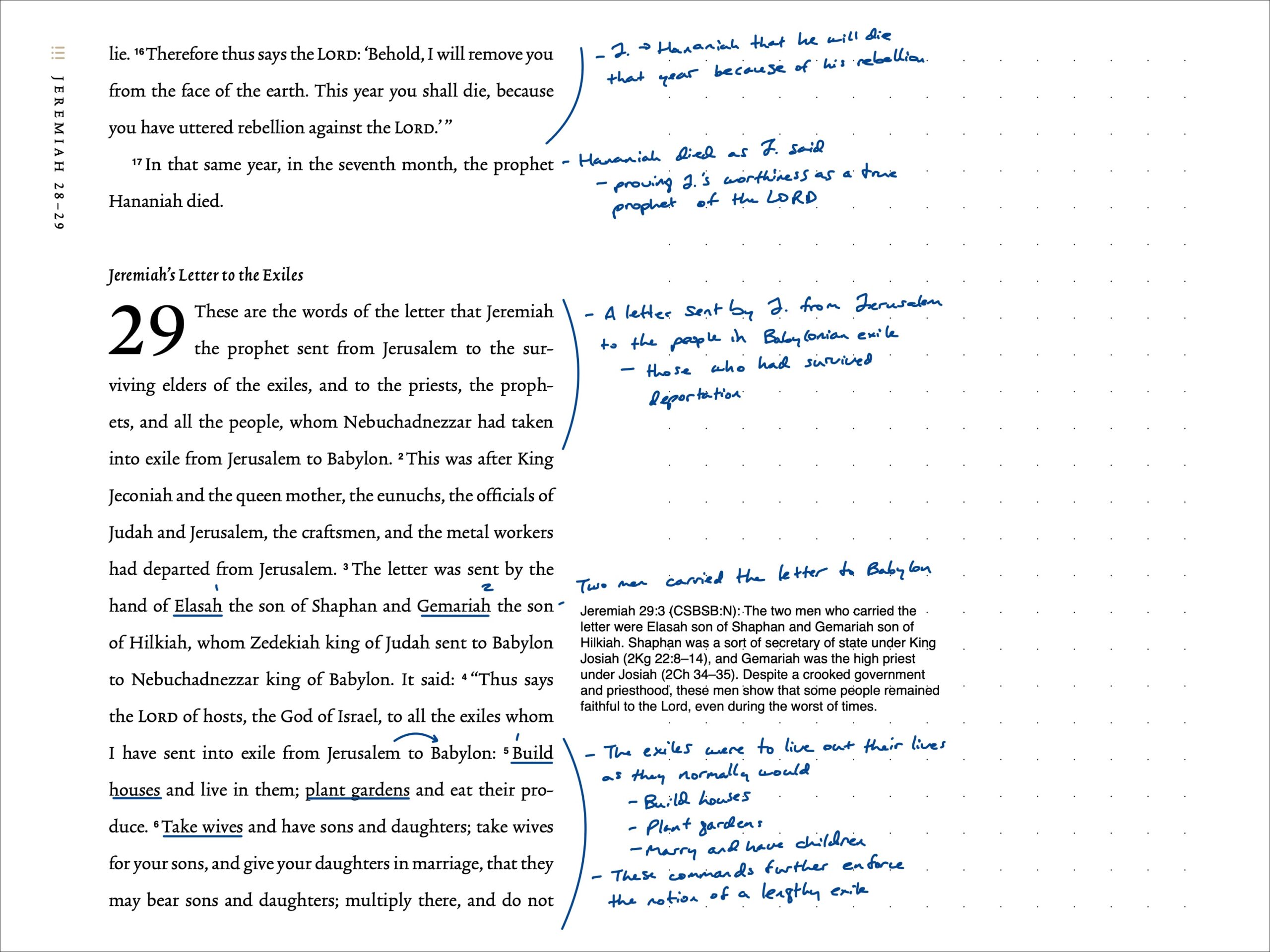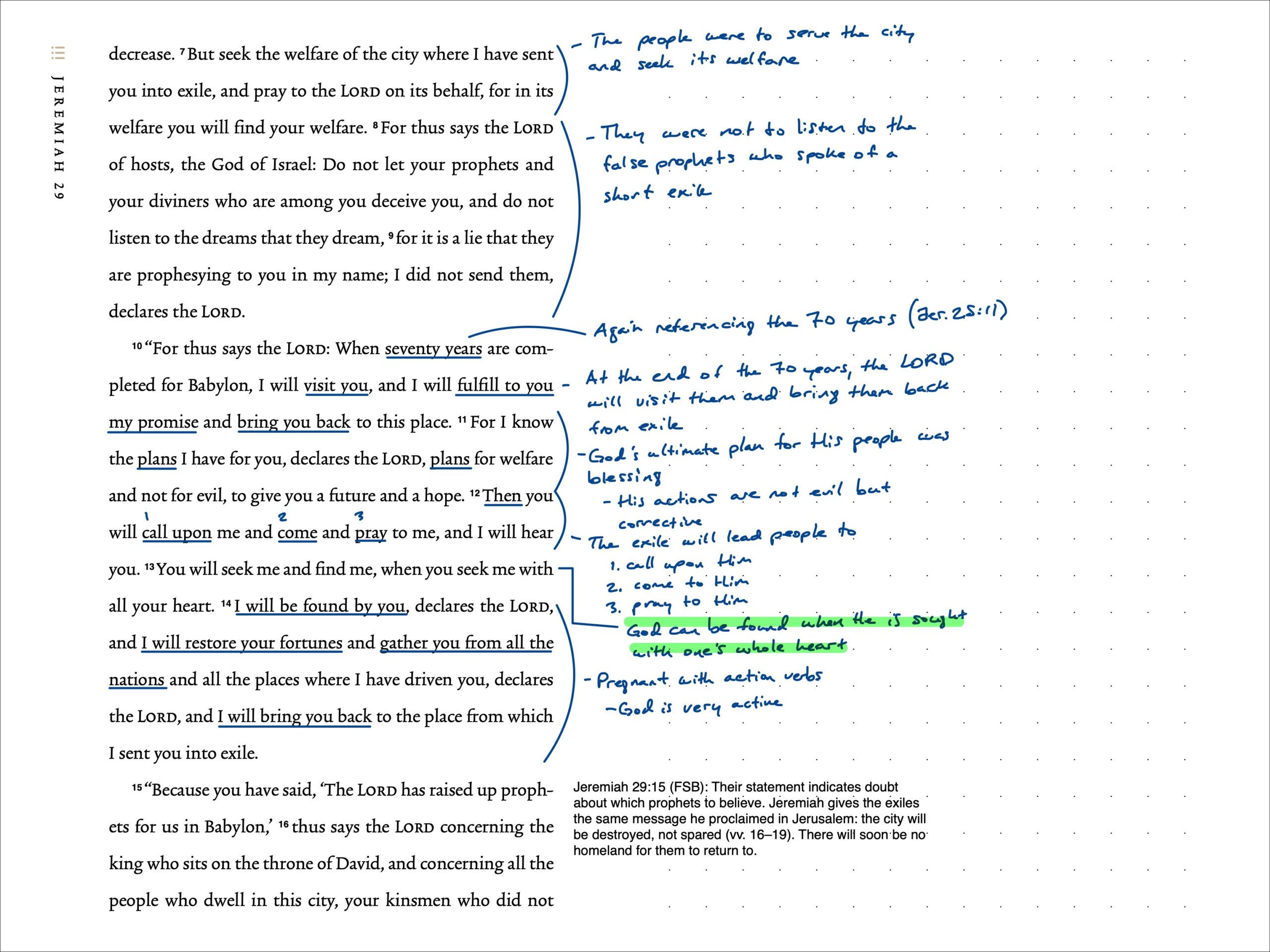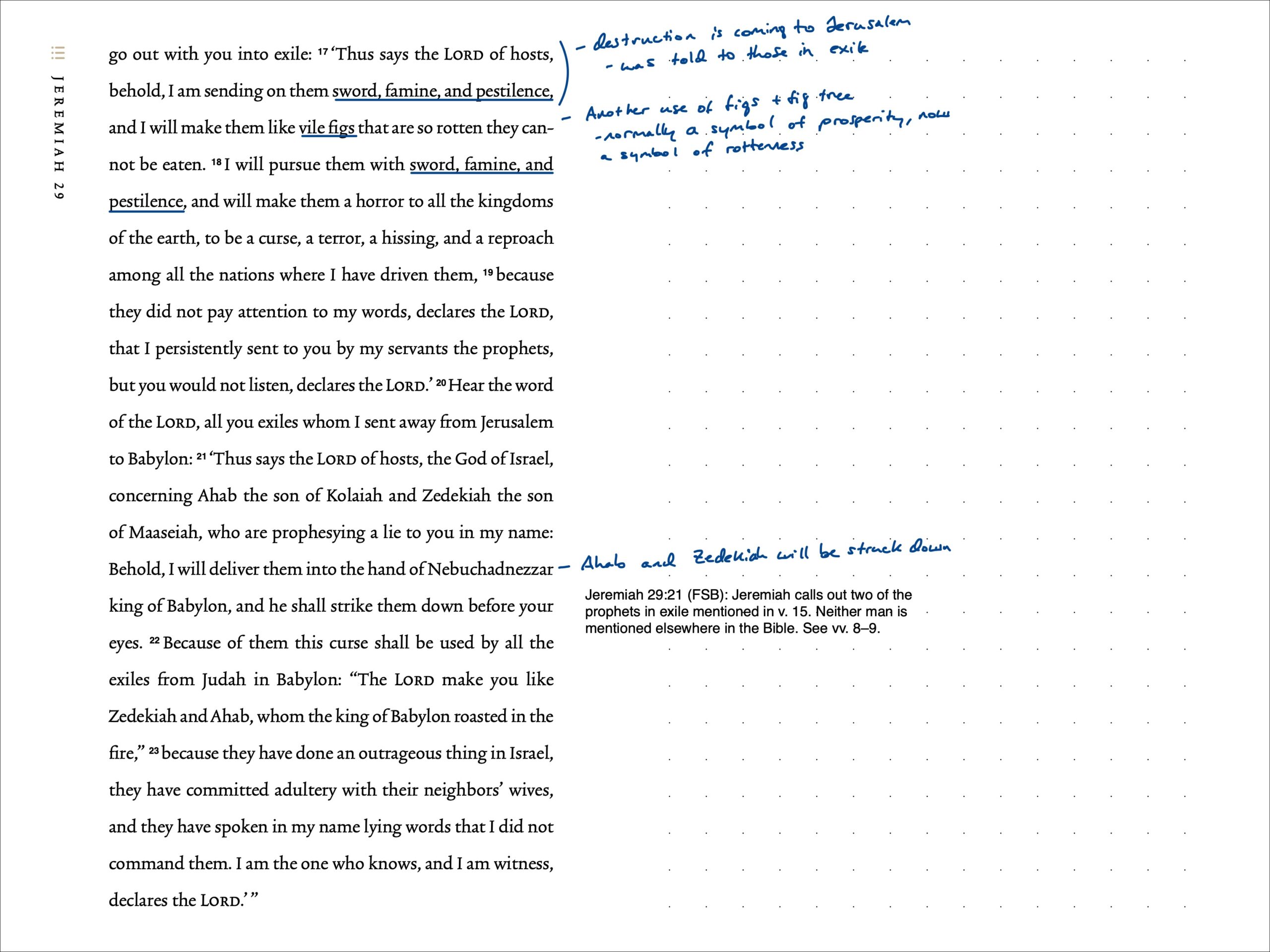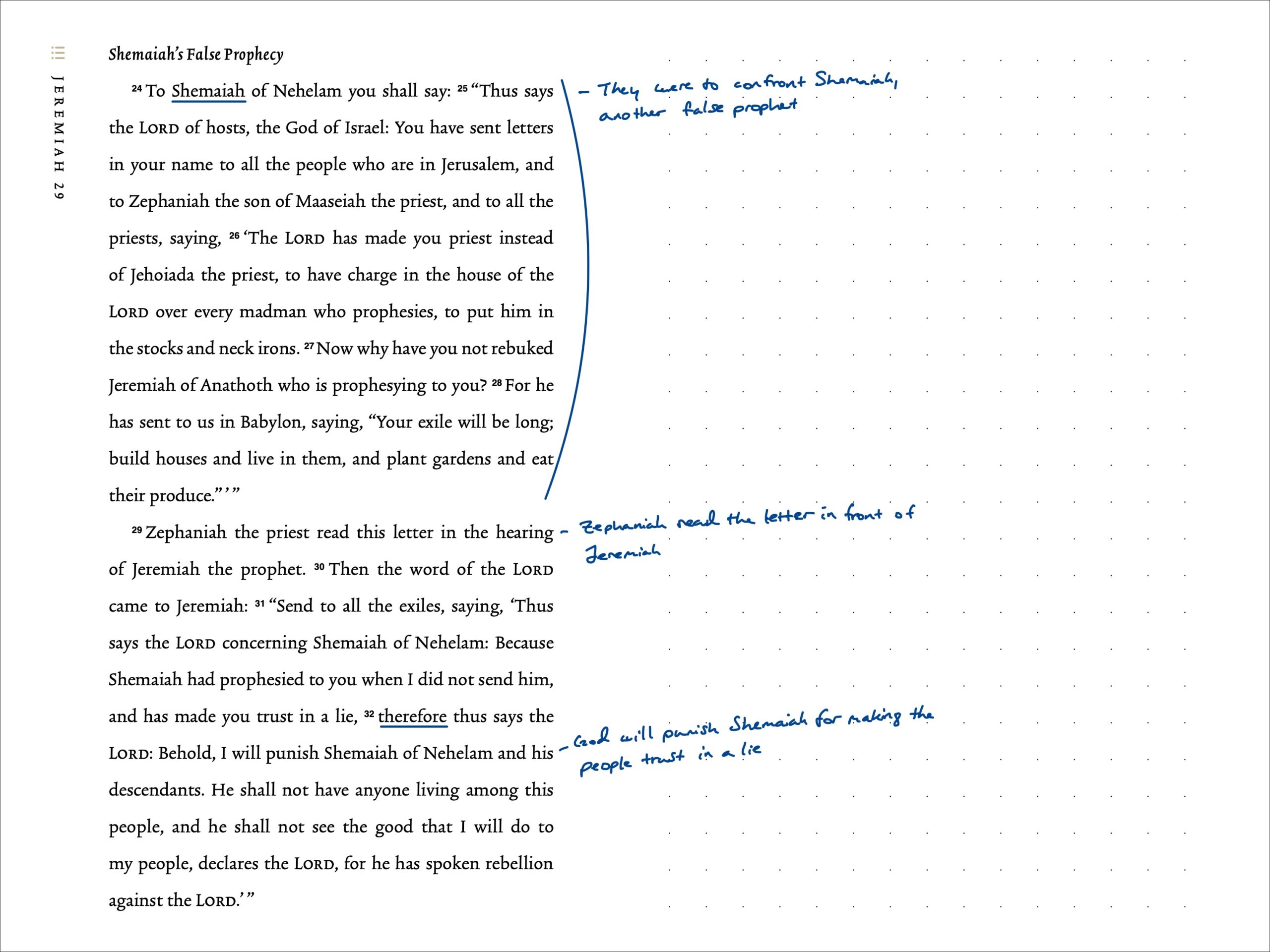| Date | Version | Reading Plan |
|---|---|---|
| @July 22, 2023 | ESV (2016) | ESV Prophets Plan 2023 |
Pericopes
- Jeremiah’s Letter to the Exiles
- Shemaiah’s False Prophecy
Notes
The chapter opens with a letter sent by Jeremiah from Jerusalem to the people in Babylonian exile who had survived deportation. Two men carried the letter, “Elasah the son of Shaphan and Gemariah the son of Hilkiah” (Jer. 29:3). Shaphan was a sort of secretary of state under king Josiah (2 Kings 22:8-14) and Gemariah was the high priest under Josiah (2 Chron. 34-35). Despite the crooked government and priesthood of the time, these two men showed that some people remained faithful to the Lord.
In Jer. 29:5-9, the letter details how the exiles are to live out their lives as they normally would; building houses, planting gardens, taking wives and building families. These commands further enforce the fact that the exile was going to be lengthy. They were to serve the city and seek it’s welfare (Jer. 25:7) and not to listen and be deceived by the false prophets speaking of a short exile (Jer. 29:8-9).
Jer. 29:10-14 illuminate God’s plan and motivation for the exile. Following the 70 years in Babylon, the LORD will visit them, fulfill His promise and bring them back (Jer. 29:10). In one of the most famous verses of the Bible, God declares that His ultimate plan does not stem from evil but from a desire to bless His people (Jer. 29:11). Those who make it through the exile will call upon Him, come to Him and pray to Him and be heard by Him (Jer. 29:12). God will be present with them and those who seek Him will find Him (Jer. 29:14).
In Jer. 29:15, the focus shifts to the false prophets and those who remained in Jerusalem. The LORD would send them sword, famine and pestilence and make them like “vile figs” (Jer. 29:17). Figs and fig trees, normally used to signify prosperity, are here used to represent their rottenness.
In Jer. 29:21-23, God singles out two of the false prophets, Ahab and Zedekiah. They will be delivered “into the hand of Nebuchadnezzar” who will strike them down before the eyes of the people. Neither of these men are mentioned elsewhere in the Bible.
The remaining verses (Jer. 29:24-32) are of the section of Jeremiah’s letter that included a reply to Shemaiah, another false prophet. The LORD gave Jeremiah a word to give to those in exile that He would punish Shemaiah for making the people trust in a lie. Shemaiah would have no descendants and would not live to see the restoration of the people (Jer. 29:32).
Application
God is very active in this chapter; both in terms of how the exile was to unfold but also in revealing His heart for its purposes. For those among His flock, His aim is always correction and reorientation of attention onto where it needs to be: Himself. Jer. 29:11 is a beautifully hopeful verse and becomes especially so when seen in its original context.
Written in a letter, it was given to people already in a difficult state of exile. These words of God’s promise to deliver and restore would have been as cold, spring water to parched souls. To know that His plan was to give them a future and a hope would be the foundation they needed to carry them through whatever they faced. And this is to be for us today, knowing that the Lord Jesus is our Rock of hope that will sustain us in our sojourning through dark and wearied land.
Scripture Journal Notes
Commentaries & Resources Used
- ESV Study Bible. (Wheaton, IL: Crossway, 2008)
- Faithlife Study Bible (Lexham Press, 2016)
- Believer’s Bible Commentary (Thomas Nelson, 2016)
- CSB Study Bible Notes (Holman Bible Publishers, 2017)
- Matthew Henry’s Commentary on the Whole Bible (Guardian Press, 1976)
- The Bible: A Reader’s Guide (Sterling Publishing, 2011)
- The Infographic Bible (Zondervan, 2018)
- ESV Digital Scripture Journal (Crossway, 2019)



